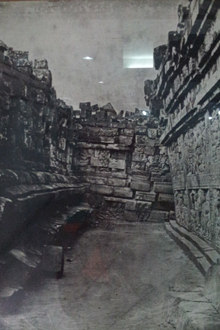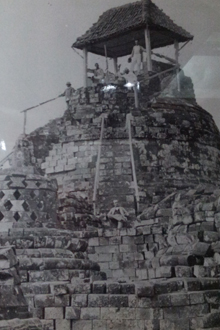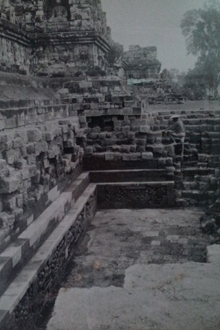 |
|
|
Indonesia |
|
"Pray" is the theme of this Indonesia trip. I did attained a spiritual cleansing and a peace of mind by experiencing life at Jogja and visiting 2 UNESCO sites. My life was so peaceful here and I really appreciate this experience. |
|
Borobudur |
||
|
|
||
|
Borobudur, a UNESCO world heritage site, is a 9th-century Mahayana Buddhist Temple in Central Java, Indonesia. It was built as a single large stupa, and when viewed from above takes the form of a giant tantric Buddhist mandala. |
|
|
|
|
|
The monument consists of 6 square platforms topped by 3 circular platforms. Each platform represents a stage of enlightenment. There are 2,672 relief panels and 504 Buddha statues. |
|||
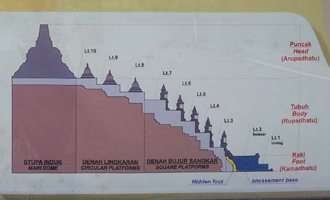 The monument consists of 3 divisions, symbolizing the “world of desires”, the “world of forms” and the “formless world”. |
Ordinary beings live their lives on the world of desires. All the reliefs about world of desires are buried by a footing platform. |
||
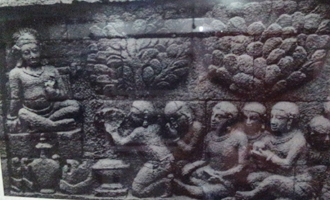 The reliefs at the world of desires depict daily life of the 8th century ancient Java. |
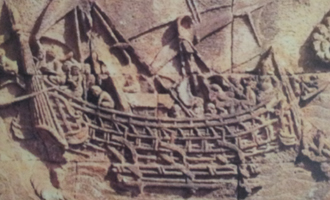 A famous double outrigger ship in the 8th century for Indonesia-Africa trade. |
||
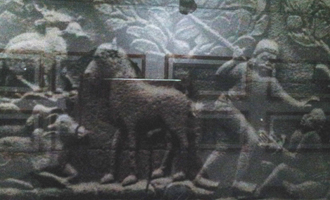 Relief depicting the law of karma – reincarnation as an animal in the next life. |
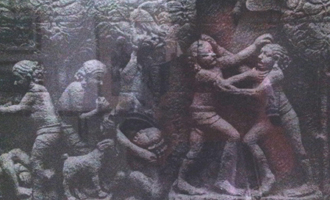 A description of specific level of hell. |
||
| World of forms | |||
|
All those who cleanse out the world's desires move onto the world of forms. There are forms in this world, but Buddha are not drawn into them. Total of 5 platforms in this world. |
The reliefs of these platforms depict the story of the Buddha's former lives, his life as a prince, his search for enlightenment, etc. Walking the path guiding pilgrims into enlightenment. |
||
|
|
|
||
|
|
|||
|
World of formless |
|||
|
The upper 3 platforms
do not have reliefs, but feature 72 small stupas
surrounding a main giant stupa. Each small stupa
is bell-shaped with numerous holes. Inside the small stupas sat
a statue of Buddha. Perhaps meaning Buddha
has been shielded off from the world of forms.
The main stupa is an enclosed dome and locates at the
center of the top platform, while inside the stupa is an
empty chamber. Finally, Buddha has gone beyond form and become formless. It is a liberation where the enlightened soul had no longer attached to the world and become nonexistence of the self. The ultimate Buddha is all in the heart. There is no need to idolise any form. |
|
||
| There are mainly 6 different type of Buddha with different types of hand gestures, symbolizing: | |||
|
- Meditating - Unafraid of dangers - Giving lectures |
- Witnessing earth - Giving blessings - Rolling the wheel of rightful principals |
||
|
This is an unfinished Buddha scripture buried underneath a walnut tree at the temple yard. Perhaps symbolizing the enlightenment of Buddha. |
Restoration work on the monument. |
||
|
Filming, to promote the Javanese culture. |
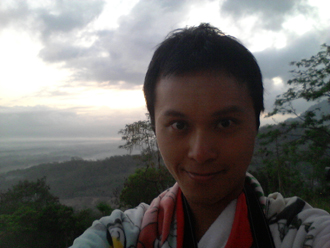 Me at 5am in the morning. |
|
September 27, 2013, I woke up at 5am, motored and hiked up a hill to capture the sunrise over Borobudur. Being a city boy, hearing the roosters crow at the moment of sunrise, feeling the morning mist caressing my face and witnessing an ordinary miracle of sunrise, on a vast green field and historical monument, are simply magical. When the first ray of sun light pierced through my eyes, my heart literally jumped. It is just magnificent... |
||
|
While I was at the top of Borobudur, I realise that I am still an earthly person with the desire of love, family and kids. It is indeed difficult to eliminate the process of having earthly desires. I am just a human; yet, a nice and sincere one. Let me just enjoy living in this wonderful earthly life. xxx |
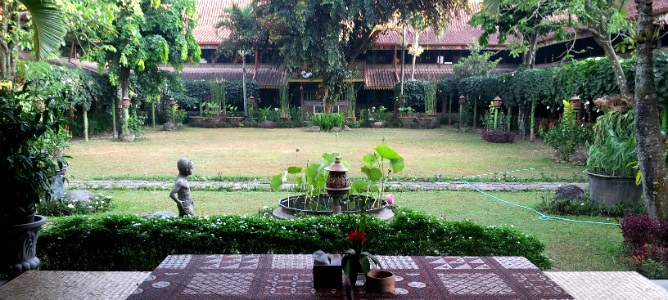 At Borobudur, I stayed at a Javanese traditional hut. Sitting at a bamboo chair overlooking the green green grass and garden right out of my room. My heart was indeed peaceful, and was definitely chilling and savouring the moment. I did have a relax holiday. |
|||
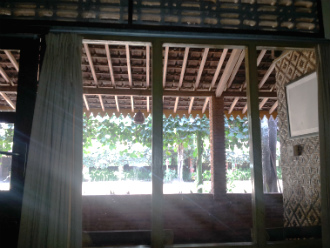 |
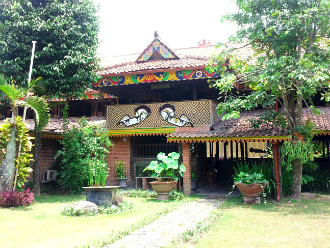 |
||
|
Prambanan Prambanan, a UNESCO world heritage site, is a 9th-century Hindu temple compound in Central Java, Indonesia. It is mainly dedicated to the Gods of creator, preserver and destroyer. It is characterized by its typical Hindu temple architecture. Originally there were a total of 240 temples standing in Prambanan. The majority of them have deteriorated; what are left are only scattered stones. |
|
It was rediscovered in the 1811 but remained as ruin for decades. |
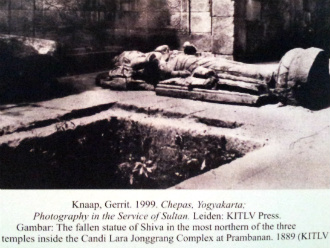 The temples collapsed during a major earthquake in the 16th century |
||
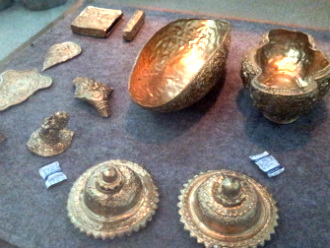 Gold and ornaments were inside the temple as offering. |
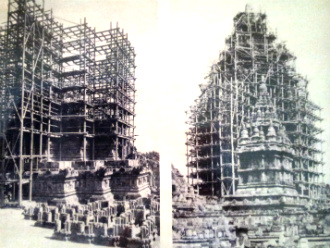 Reconstruction of the 8 main holiest temples out of total of 240 temples. |
|
The 3 main temples, called Trimurti, are dedicated to the three Gods: |
||||
|
Brahma the Creator, who has 4 heads, symbolizing the cardinal points. |
Vishnu, the Preserver, is the highest god on the Hindu triad and he is the God of sun. |
Shiva is the Destroyer. |
||
|
The Shiva temple is the tallest and largest temple in Prambanan complex. Some historians believe that the king then was perceived as reincarnation of Shiva. So, when he died, a temple was built to commemorate him as Shiva. |
Hinduism is full of gods and creatures representing different symbols. Here is Makaras; a crocodile/fish-elephant representing water and darkness snail down the staircase. I am wearing a shirt with a cartoon Kala. |
|
|
|
Kala is a lion’s face, representing time, sun and light, usually sets on top of an arch or gate. As you entering his mouth signifies that time is going to eat you – "every human will die eventually". |
|
|
|
Ganesha, commonly known as the elephant god, symbolizes as a remover of obstacles, the patron of arts and sciences and the god of intellect and wisdom. |
|
A signature "Prambanan panel", depicting a lion in niche flanked by two kalpataru trees with each of the tree is flanked by a pair of birds with human heads. |
Bodhisattva has become enlightened but refused to enter formless as he has desires to guide mankind to the true path of Buddhism. |
||
|
Nandi, a buffalo, is believed to be a vehicle used by Shiva to reach heaven. |
Some other beautiful scripture of Hindu God. |
|
|
|
||
| The main temples are encircled reliefs telling the story of Ramayana. The story was like a beautiful wife of a king was abducted by a villain with use of dark magic. Then the prince was trying to rescue her, etc. | |||
|
The monkey king brings his army to help the king and rescue his wife. Birds symbolize religion and have a higher priority on worldliness. So likely it is the King with a bird on top requesting for assistance from the monkey. The following are some reliefs easier for my interpretation: |
|||
|
Wife punishing husband for adultery. |
Let’s have a blow job. |
Woman giving birth. |
|
Sewu temple is an 8th-century Buddhist temple located just 800 meters north of Prambanan. It predates Prambanan. Although originally only around 249 temples are present, the name in Javanese translates to "a thousand temples". |
|
|
There has been some reconstruction. |
But most temples are left as stone piles. |
|
Jogjakarta |
|
||
|
The entrance of the Sultan's palace. There is still a Sultan at Jogja. |
Herewith where the Sultan sits and greets his guests. |
||
|
Taman Sari. A water castle built for pleasure for the first Sultain in 1765. |
I am at the tower where the Sultan sat and picked his girls (or guys) for pleasure. |
||
|
Heritage buildings from the Dutch colonial era. |
Tugu Jogja was built a year after the construction of Yogyakarta Kingdom, which signifies the united spirit to fight colonials. |
||
|
Horsecart at Malioboro, Jogja's famous traditional shopping street. I didn't bargain as the asking price of the shirts I bought was US$2. |
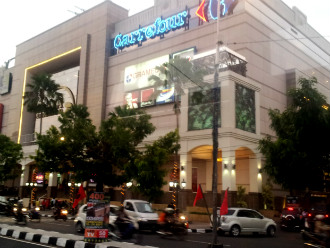 Plaza Ambarrukmo. A modern shopping mall, at which I shopped for food and snacks for my stay here at Jogja. |
||
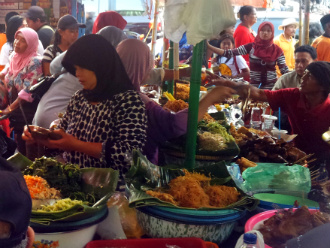 Food stall outside of Pasar Beringharjo, a traditional market. |
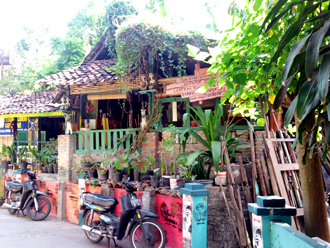 A characteristics area near the palace. |
||
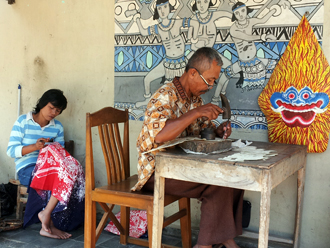 Hand-printing and dying of textile. |
Playing of Javanese music instrument. |
||
|
Living life style |
|||
 Having a friend at a foreign land did provided me a heart felt security. I felt blissful as Elmo drove me around town with his motor bike. Thanks! |
I got to thank James for letting me to stay at his apartment. I sensed lot of love in the house. I was really touched. |
||
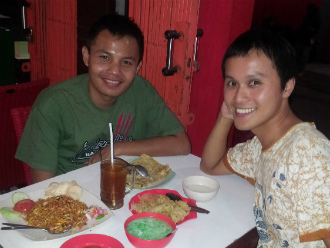 Elmo was very delightful bringing me to try numerous local delicacy. Gladly my tummy handled all different varieties during the trip. |
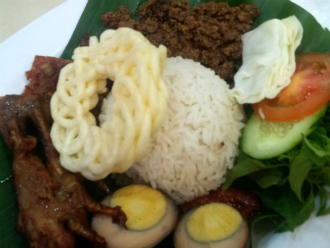 Gudeg. The most famous Jogja dish. "Gudeg" refers to the sweet jackfruit sauce, which the taste is so unqiue which I've never tried before. |
||
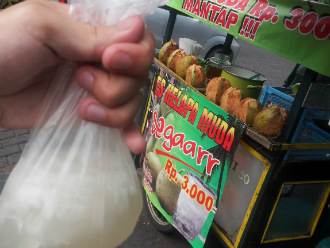 Coconut drink on the street. A sweet taboo. |
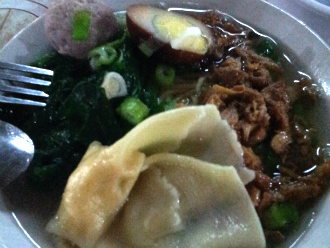 Dumpling noodle. |
||
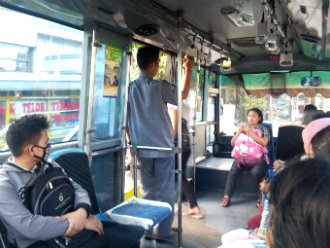 Except on the first day I took taxi from airport to hotel, every trip I had in Jogja was by local bus, even for going to Borobudur, Prambanan and the airport. I feel great experiencing the local's way of life. |
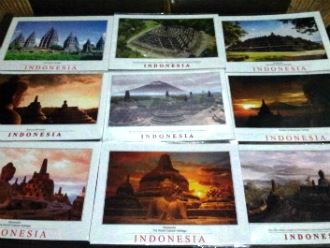 While I am yet on a lone trip, writing post cards is a way to share my moment of happiness with friends. I am grateful to have family and friends loving to receive my post cards. ^__^ | ||
|
September 30, 2013 I really have a inspired feeling toward Jogja, Indonesia. The living expense here is low, but it doesn't mean the people here are poor. When I interacted with them, they are joyful and helpful. Happiness is all about our expectation of wants and needs. One does not need a lot to be happy; and so does having a lot does not make one happy. I don't see much of a difference between them living in Jogja and me living in Hong Kong - we are just living respectively in our environment, making a living, living and enjoying life. |
|
|
|
|
